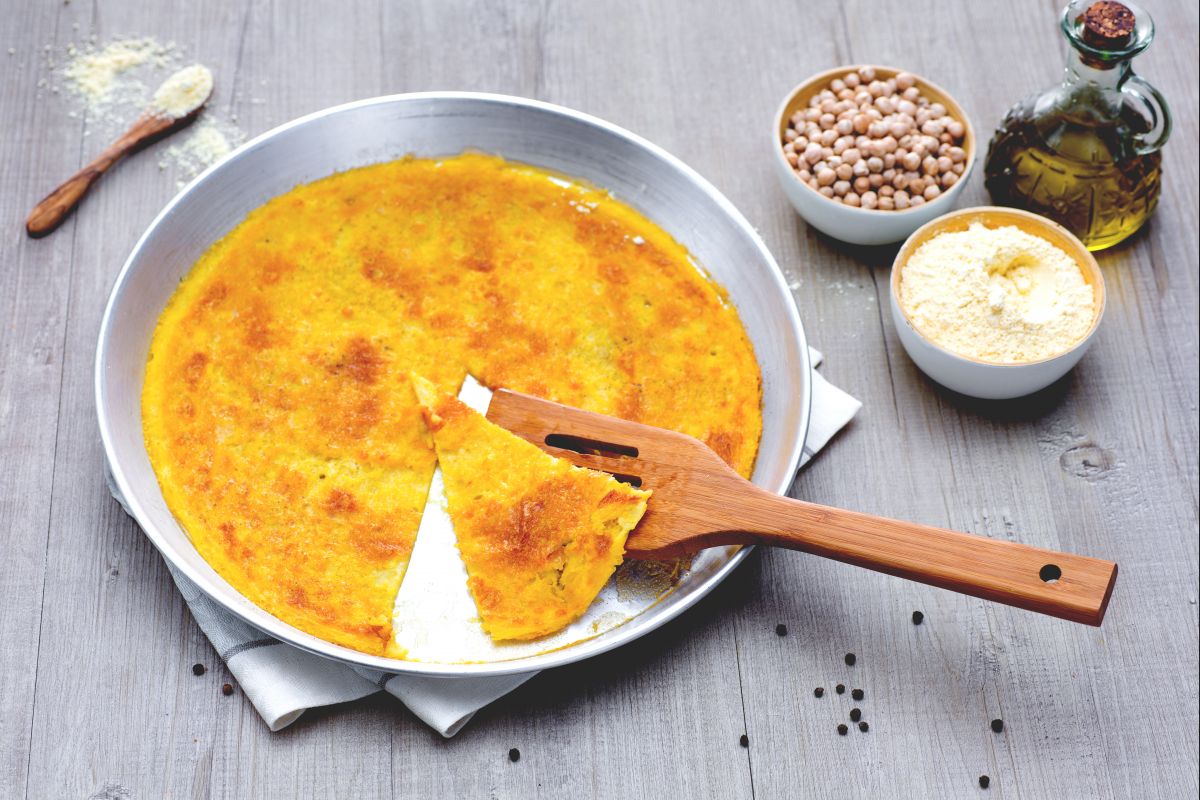Baked Anelletti
- Average
- 2 h 15 min
- Kcal 239


Soft, golden color draws you right in—chickpea farinata is that cozy, satisfying savory pancake everyone remembers long after a meal. Always a big HIT with families, this classic from the heart of Italy brings great taste and flavors inspired by real Ligurian street food straight to busy homes. Textures run from gently crisp at the edges to perfectly moist and tender inside, giving every bite lots of rich Mediterranean flavor (that hint of earthiness is DELICIOUS). Whether picked up as a quick vegan snack or sliced up beside salad for dinner, farinata recipe options easily fit any casual family meal. Simple, natural taste appeals to all ages, while that pretty golden appearance makes it look extra inviting…and you’ll often hear people say how much they love that unique spin compared to regular pancakes or breads. Since it’s made for all, home cooks get a gluten-free favorite that works for so many dietary needs. Best part? It’s a good fit for celebrations, regular eats, or anytime you want food with a story and a smile.
Easy but special, chickpea farinata matches up with weeknight meals, party trays, or even lunchboxes. Families often serve it as a party starter (try it next to cheese, fresh veggies, or even olives—kids and adults LOVE the variety). Vegetable lovers notice how flexible this is: classic rosemary or jammy onions on top let you bring fresh flavor every time, while cheese or seasoned salt can really bump the taste for picky eaters. Because socca is naturally dairy-free and good for gluten-free or vegan friends, everyone gets something to enjoy—no worries about substitutions. Soft and hearty, this stovetop favorite feels filling without being heavy...makes weeknights easier, and special occasions a little brighter! Simple to slice, easy to carry, and just right as a gluten-free appetizer or wholesome meal helper, this Italian chickpea pancake earns a permanent spot in every family’s rotation. (Extra tip: it’s awesome cold the next day—part of what makes a nice, fuss-free lunch.) What’s not to love about a dish that looks pretty, tastes really good, and makes everyone happy around the table?
You might also like:

To prepare the farinata, put the chickpea flour 1 in a bowl and form a mound with a well in the middle. Pour water at room temperature 2 into the well a little at a time. Mix everything thoroughly, taking care not to form lumps, until the mixture is liquid and uniform 3.

Cover the mixture with plastic wrap 4 and leave to rest outside the fridge from 4/5 to 10 hours, stirring occasionally. After this time, you will notice some foam on the surface; remove this with a skimmer 5 and stir 6.

Add ¼ cup (50 g) of oil 7 and salt 8 to the mixture and stir again 9.

Oil three 8-inch (32-cm) baking pans with the remaining oil (the pans used are traditionally copper or aluminum, but you can also use an ordinary nonstick pan). Use a ladle to spread the chickpea mixture over the pans 10. Smooth to an even thickness with the aid of a fork 11 to ensure uniform cooking, then bake in a conventional oven preheated to 480°F (250°C) Bake in the lower part of the oven, in contact with the bottom, for the first 10 minutes. If using a convection oven, bake for just 7-8 minutes at 430°F (220°C) and then follow the rest of the steps indicated. After this time, move the pan to the top part of the oven and bake for another 10-15 minutes, depending on your oven, until the farinata 12 is a nice golden-brown color. Take the farinata out of the oven and enjoy it piping hot, sprinkling it with black pepper to taste.